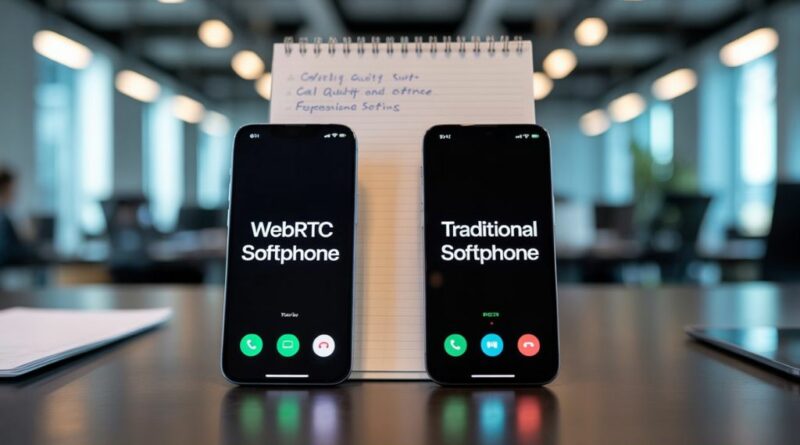WebRTC Softphone vs Traditional Softphone
For years, businesses relied on traditional SIP-based softphones — applications installed on desktops or mobiles — to connect with VoIP and PBX systems. But today, a new approach is rapidly overtaking them: the WebRTC softphone. By harnessing the browser, WebRTC is eliminating complexity, lowering costs, and providing a better user experience.
What is a Traditional Softphone?
A softphone is a software-based phone that lets users make and receive calls via VoIP. Classic examples include apps like X-Lite or Zoiper, which require installation and configuration. These SIP clients communicate with a PBX server or SIP proxy to handle calls.
Key traits:
- Requires downloads and setup
- Device-specific (desktop or mobile app)
- Configuration can be technical for end-users
- Security depends on SIP/TLS/SRTP implementation
More about SIP softphones can be found in the IETF SIP spec.
What is a WebRTC Softphone?
A WebRTC softphone works directly in the browser — no downloads needed. Users simply open a web page and start calling. It leverages WebRTC, the open standard for real-time communication built into modern browsers.
Key traits:
- Runs instantly in Chrome, Edge, or Firefox
- Encrypted by default with SRTP
- Integrates easily with hosted or on-premise PBX
- Ideal for remote and mobile workers
Some open-source options include Jitsi and Linphone, which both support WebRTC functionality.
Head-to-Head: WebRTC vs Traditional
- Ease of Use
- Traditional: Requires installation and manual setup.
- WebRTC: One click in the browser.
- Security
- Traditional: Depends on optional TLS/SRTP.
- WebRTC: Encryption is mandatory.
- Mobility
- Traditional: Device-locked apps.
- WebRTC: Works on any browser, any device.
- Cost
- Traditional: May require paid licences and IT support.
- WebRTC: Often open source and lighter to deploy.
- Integration
- Traditional: Deep integration with SIP and PBX but rigid.
- WebRTC: Flexible, works with gateways to connect to SIP/PBX.
Why the Browser is Winning
The rise of hybrid and remote work has made WebRTC softphones the clear favourite. Instead of managing multiple client installations, IT teams can roll out a browser-based softphone that works instantly across devices. Businesses get faster deployment, lower costs, and stronger security — all while keeping compatibility with existing SIP and PBX systems through gateways like Asterisk WebRTC or FreeSWITCH WebRTC.
Conclusion
Traditional SIP softphones won’t disappear overnight, but their dominance is fading. WebRTC softphones are easier, safer, and more flexible — perfectly suited to the browser-first world. For companies modernising their telephony, the browser is no longer just an option. It’s the future.
For more articles like this one, visit Softpage.



